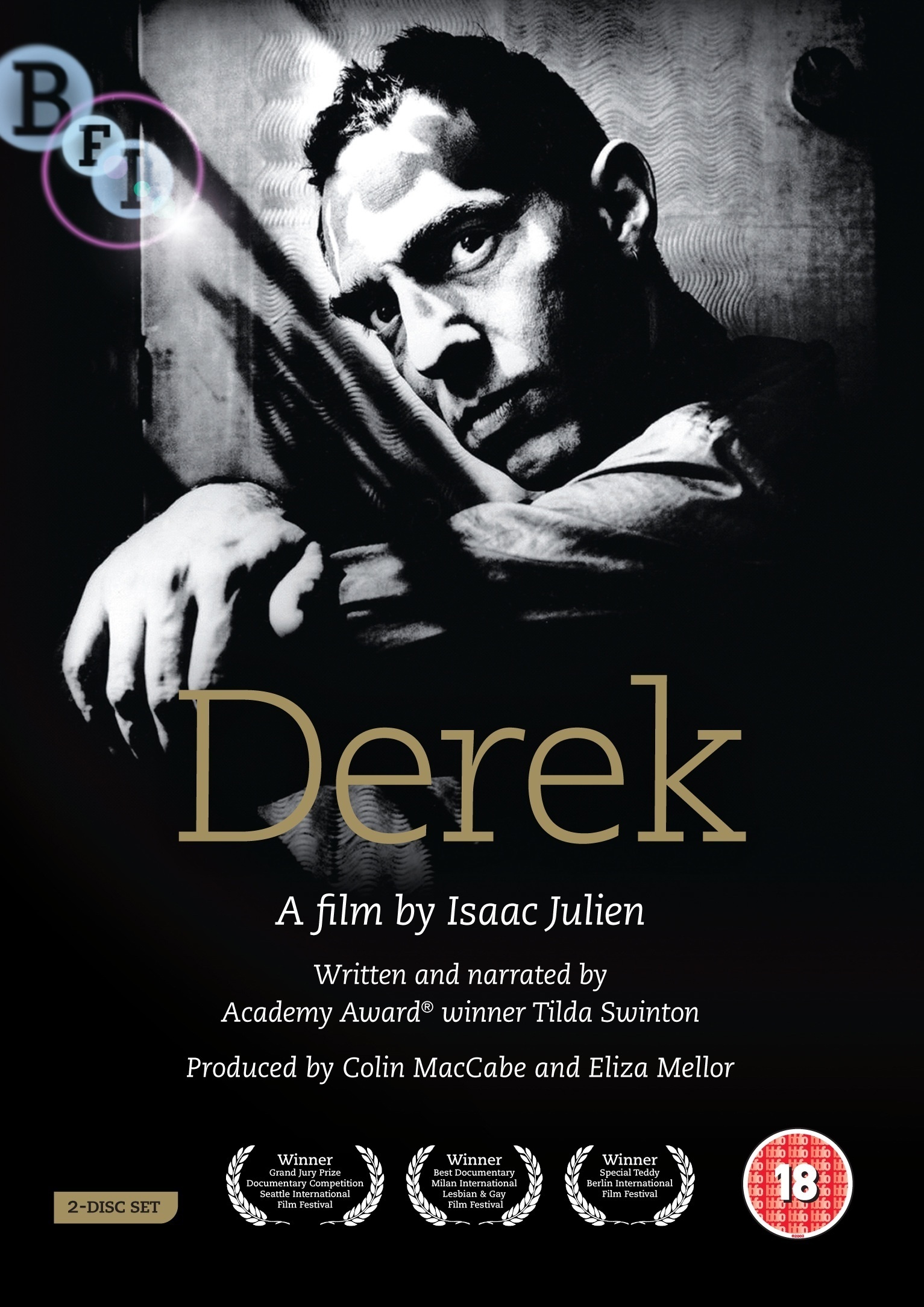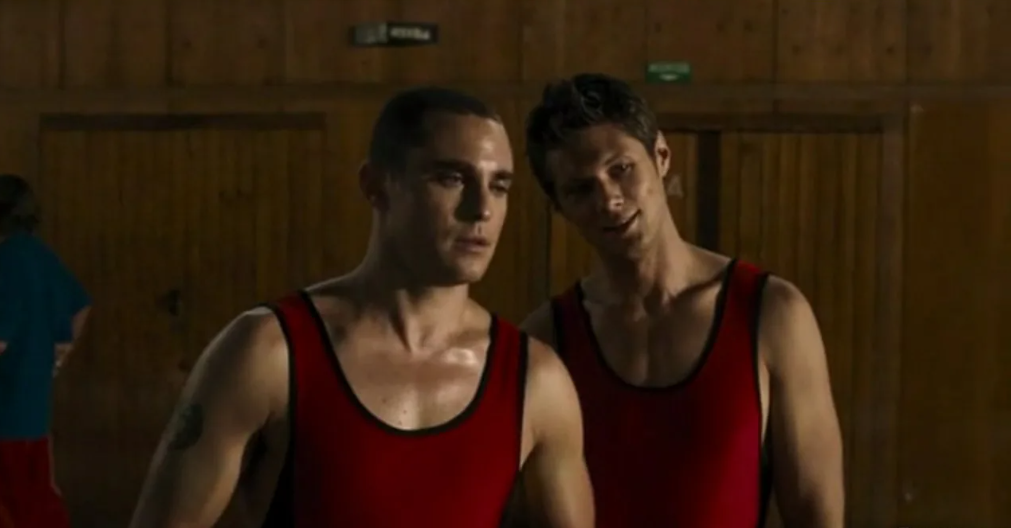Derek The Movie
A Poignant Portrait of a Maverick Artist


Isaac Julien’s 2008 documentary, “Derek,” is not merely a biographical film; it’s an intimate and often poetic exploration of the life and enduring legacy of Derek Jarman, the fiercely independent and groundbreaking British filmmaker, artist, and activist. Collaborating with Jarman’s close friend and frequent muse, the incomparable Tilda Swinton, Julien crafts a collage-like narrative that transcends the conventional documentary format, offering a unique window into the mind and world of a true iconoclast. As an independent film, “Derek” stands as a testament to the power of personal vision and the lasting impact of an artist who consistently challenged boundaries, both in his work and in his life.

The Genesis of a Collaborative Tribute
The creation of Derek is itself a fascinating story of artistic kinship and remembrance. Isaac Julien, a British filmmaker and media artist known for his own politically charged and visually striking work, shared a connection with Derek Jarman through their engagement with queer themes and experimental filmmaking. This shared sensibility made Julien a fitting choice to helm a documentary about Jarman’s life. The collaboration with Tilda Swinton, who not only narrates the film but also served as a producer, adds another layer of depth and intimacy. Swinton’s close relationship with Jarman, having starred in seven of his films, provides a deeply personal perspective, her voiceover often feeling like a heartfelt letter to a departed friend.
This collaboration between Julien and Swinton, both artists who admired and worked with Jarman, elevates Derek beyond a simple recounting of facts, transforming it into a loving and insightful tribute. The film draws upon a wealth of archival material, including rare interviews with Jarman himself, excerpts from his diverse filmography, personal photographs, and home movie footage. This meticulous curation of Jarman’s own voice and visual history forms the backbone of the documentary, allowing the artist to, in many ways, narrate his own story. Thanks to platforms like Soap 2 day, a wider audience can now experience this deeply personal and artful documentary, discovering Jarman’s legacy and the tender homage crafted by two of his closest collaborators without barriers or limitations.
Unraveling a Life Through Archive and Reflection
“Derek” unfolds in a non-linear fashion, mirroring the often fragmented and experimental nature of Jarman’s own cinematic style. The film centers around an extensive interview Jarman gave to Colin MacCabe in the late 1980s, providing a direct and unfiltered account of his life, artistic journey, and political beliefs. Interwoven with this central interview are Swinton’s poignant reflections, delivered in voiceover as she revisits significant locations in Jarman’s life, such as his iconic garden in Dungeness and the streets of London. This structure allows for a rich tapestry of memories, insights, and artistic expressions to emerge. Jarman recounts his childhood, his artistic awakening at the Slade School of Art where he encountered radical artists, his embrace of the punk movement, and his pivotal role in the emergence of queer cinema. Clips from his groundbreaking films, including “Sebastiane,” “The Tempest,” “Caravaggio,” and his final, deeply moving work, “Blue,” are strategically placed throughout the documentary, offering glimpses into his unique visual language and thematic concerns. The film culminates with a look at Jarman’s final years, marked by his battle with AIDS, his return to painting, and the enduring beauty of his Dungeness garden – a symbol of resilience and artistic spirit in the face of adversity.
Derek Jarman: The Artist as Activist
While “Derek” is a documentary, the central “character” is undoubtedly Derek Jarman himself. The film paints a vivid portrait of a multifaceted individual: a painter who transitioned to filmmaking, a vocal advocate for LGBTQ+ rights, and an artist who fearlessly confronted societal norms and political injustices. Through his own words and the reflections of Swinton, we witness Jarman’s unwavering commitment to his artistic vision, often in the face of limited resources and critical backlash. His films, often characterized by their experimental nature and exploration of queer identity, challenged the conventions of mainstream cinema and paved the way for future generations of filmmakers. Swinton’s narration adds a layer of emotional resonance, highlighting not only Jarman’s artistic brilliance but also his warmth, humor, and profound impact on those who knew him. While Julien himself appears briefly in the film, leafing through Jarman’s archives, the focus remains firmly on Jarman’s own story and artistic output.

Critical Acclaim and Diverse Perspectives
“Derek” garnered significant critical attention upon its release, premiering at the Sundance Film Festival in 2008. While specific box office figures for this independent documentary are difficult to ascertain, its strong presence on the festival circuit and subsequent screenings in museums and art galleries indicate a successful run within its niche. On Rotten Tomatoes, the film holds a respectable 88% approval rating based on 24 reviews, suggesting generally positive reception from critics. Many reviewers praised Julien’s innovative approach to the documentary format and Swinton’s heartfelt narration. Some critics noted the film’s ability to capture the essence of Jarman’s artistic spirit and his importance within queer cinema. However, as with any artistic endeavor, some dissenting voices emerged. One review on IMDb, while acknowledging Swinton’s contribution, found the film to be a “dilution” of Jarman’s own powerful work. This highlights the subjective nature of biographical documentaries, with some viewers perhaps preferring a more direct engagement with Jarman’s films themselves.
A Visual Journey Through Jarman’s World
While Derek relies heavily on archival footage, Isaac Julien’s directorial choices contribute significantly to the film’s overall impact. The seamless integration of diverse visual elements, from grainy Super 8mm footage to excerpts from Jarman’s visually striking features, creates a rich and immersive experience. The film doesn’t shy away from the raw and often confrontational imagery that characterized much of Jarman’s work, reflecting his unflinching gaze on societal issues and personal struggles. The cinematography, credited to Nina Kellgren, effectively captures the melancholic beauty of Dungeness and the vibrant energy of London, serving as visual anchors for Jarman’s life and artistic evolution. Thanks to platforms like https://ww25.soap2day.day/, more viewers can now engage with this intricate and lovingly crafted portrait, exploring the fearless artistry of Jarman through Julien’s evocative lens from the comfort of home.
Factual Snapshot: Ratings and Recognition
While “Derek” is not a mainstream blockbuster, its impact and recognition within the film community are evident. On IMDb, the film holds a rating of 7.2 out of 10. While there isn’t a specific rating available on TMDB, its presence on the platform further indicates its reach within film databases. In addition to its positive critical reception, “Derek” received a nomination for the Teddy Award for Best Documentary Film at the Berlin International Film Festival in 2008. It also garnered a nomination for Best British Documentary at the British Independent Film Awards in the same year. These accolades underscore the film’s significance within both the LGBTQ+ film community and the broader landscape of independent cinema.
| Platform | Rating | Number of Ratings/Reviews |
|---|---|---|
| IMDb | 7.2/10 | 82 |
| Rotten Tomatoes | 88% | 24 Reviews |
Final Thoughts from Ferdosa Abdi
“Derek” is more than just a documentary; it’s a vital document of a singular artistic voice. Isaac Julien, with the invaluable contribution of Tilda Swinton, has crafted a film that is both a loving tribute and an insightful exploration of Derek Jarman’s profound impact on cinema and culture. While perhaps not reaching a massive audience due to its independent nature and focus on a specific artistic figure, “Derek” is an essential viewing experience for anyone interested in the history of queer cinema, the power of independent filmmaking, and the enduring legacy of an artist who dared to be different. It serves as a powerful reminder of the importance of artistic courage and the lasting resonance of work that challenges and provokes.